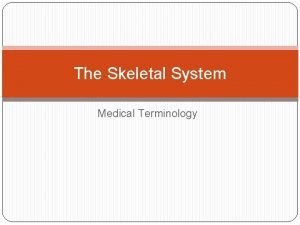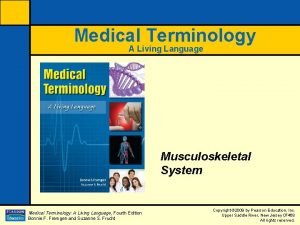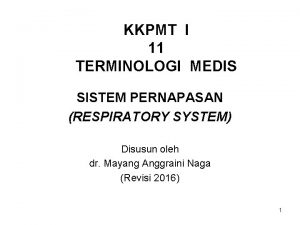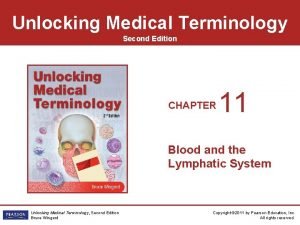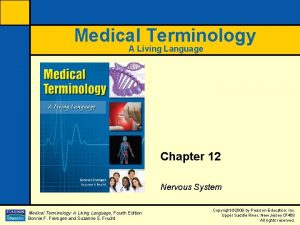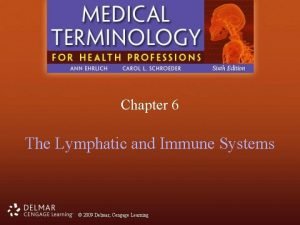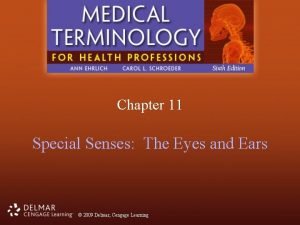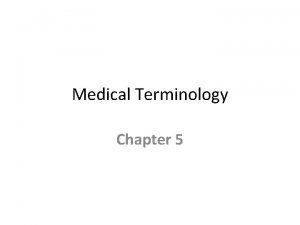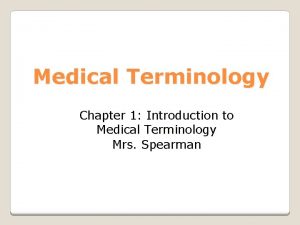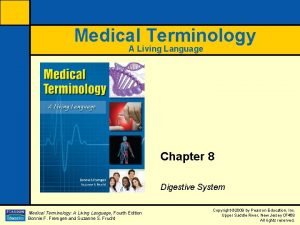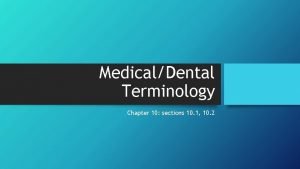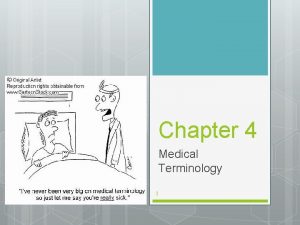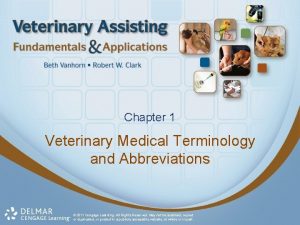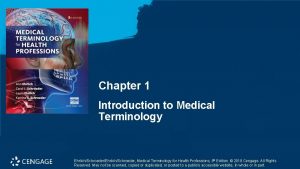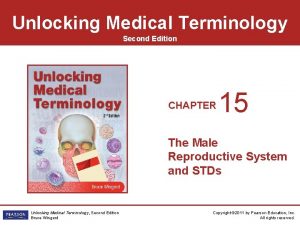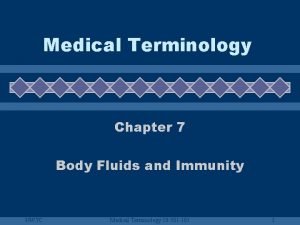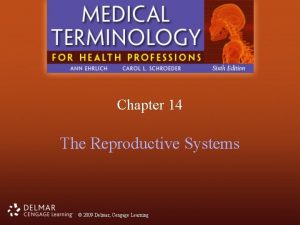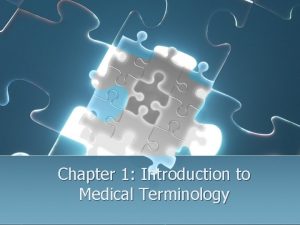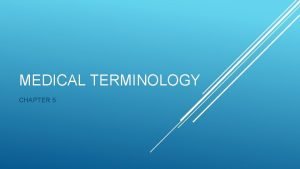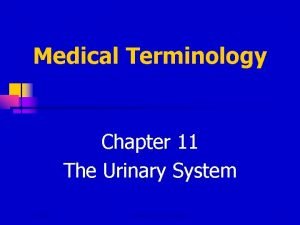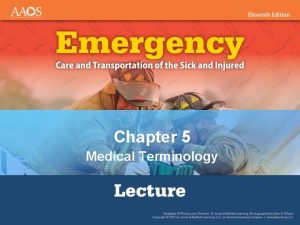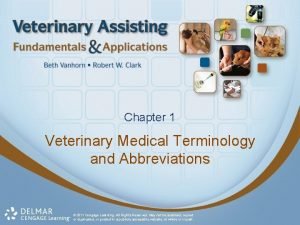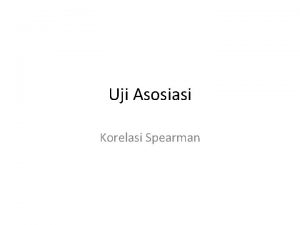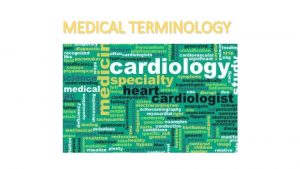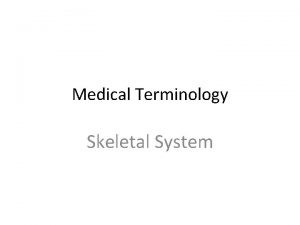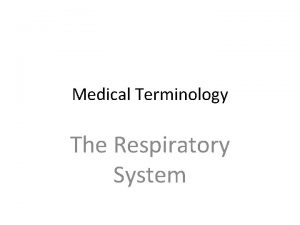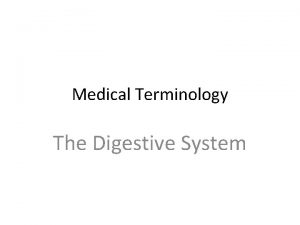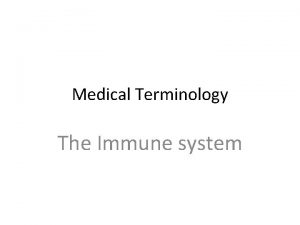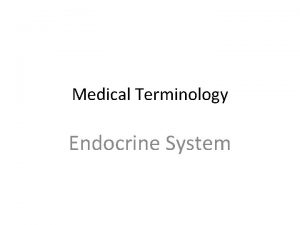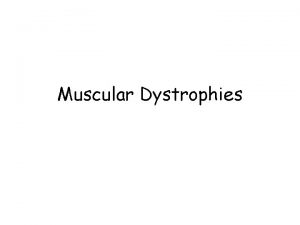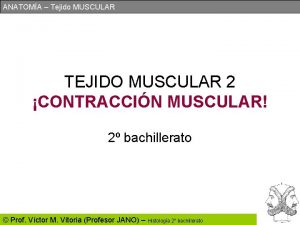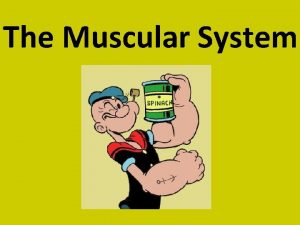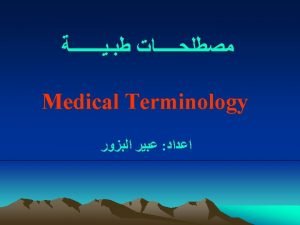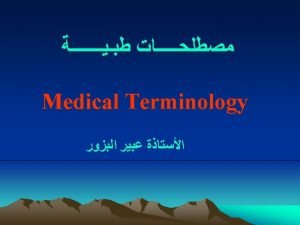Chapter 4 Muscular System Mrs Spearman Medical Terminology































- Slides: 31

Chapter 4: Muscular System Mrs. Spearman Medical Terminology

Objectives 1. I can describe the functions and structures of the muscular system.

Functions of the Muscular System Hold the body erect and make movement possible. 2. Muscle movement generates nearly 85% of the heat that keeps the body warm. 3. Move food through the digestive system. 4. Aids the flow of blood through veins 1.

Organs of the Muscular System 600 Muscles tendons

Types of Muscles There are 3 types of muscles: ◦ Skeletal Muscles ◦ Smooth Muscles ◦ Myocardial Muscles

Skeletal Muscles Attach to bones Also known as voluntary muscles ◦ Voluntary means we have conscious control of these muscles Also known as striated muscles ◦ Muscles appear striped under the microscope

Smooth Muscles Also known as involuntary or unstriated muscles ◦ Involuntary means we do not have conscious control over the muscles. Smooth muscles are found in the hollow digestive and urinary systems

Myocardial Muscles Also known as cardiac muscles This muscle is involuntary also. Found in the heart

Objective I can identify and define terms related to muscle movements. I can identify medical specialist associated with the Muscular System.

Abduction vs. Adduction Abduction—movement of a limb away from the midline Adduction—movement of a limb toward the midline

Arm Flexion vs. Extension Flexion—bending a limb at its joint Extension—straightening of a limb at joint a

Leg Flexion and Extension

Rotation vs Circumduction Rotation – circular movement in which limb rotates on an axis. Circumduction – Circular motion in which limb traces out the shape of a cone.

Pronation and Supination Pronation – turn wrist so palm faces (down) posteriorly Supination – turn wrist so palm faces (up) anteriorly Can also be done with entire body Face down = Prone Face Up = Supine

Dorsiflexion vs. Plantar Flexion Dorsiflexion – ankle movement that bends the foot upward Plantar flexion – ankle movement that bends the foot downward (Point Toe)

Write It! 1. 2. 3. 4. 5. The _____ muscles are under voluntary control. Turning of the hand so the palm is upward is _________ is pointing the toes. _______ is bending the arm at the elbow. _______ is moving the arm toward the midline.

Write It! The _______ and _____ muscles are under involuntary control. 7. Turning your head from left to right is known as ________. 8. Turning the palm face down is know as _________. 6.

Medical Specialties Exercise physiologist—coordinate exercise programs and administer medical tests to promote fitness Neurologist– a physician that treats paralysis and muscular disorders Physiatrist (physical therapist)—a physician specialize in physical medicine and rehabilitation Rheumatologist—a physician treats arthritis and connective tissue disorders

Sports medicine physician—treats sports-related injuries of the bones, joints, and muscles.

Objective I can identify and define terms related to the pathology and the diagnostic and treatment procedure of the muscular system.

Tendon—attaches a muscle to bone

Pathology of the Muscular System Tenodynia or tenalgia– pain in a tendon Tendinitis—inflammation of the tendons caused by excessive use of a joint Fibromyalgia syndrome—condition characterized by fatigue and/or specific muscle, joint, or bone pain

Muscle Disorders Atrophy--muscle weakness or wearing away of muscles due to disuse of muscle Myalgia (myodynia)—pain in the muslces Myocele– herniation (protrusion) of a muscle through a tear in the tissues surrounding it Myolysis—degeneration of muscle tissue

Muscle Disorder cont. Myomalacia—abnormal softening of a muscle Myorrhexis—rupture or tearing of a muscle Polymyositis—inflammation of the many muscles

Muscle Atrophy

Myocele

Myorrhexis

Muscle Tone (tonus) Tonic—pertaining to a muscle Atonic—pertaining to lack of normal muscle tone or strength Dystonia—a condition of abnormal tone that causes impairment of voluntary movement Hypertonia—a condition of excessive tone of the skeletal muscles Hypotonia—a condition of reduced tone of the skeletal muscles

Voluntary Muscle Movement Ataxia—inability to coordinate muscle activity during voluntary movement because of brain issues Dystaxia—mild form of ataxia Spasm—sudden, violent, involuntary contraction of one or more muscles Cramp—muscle spasm named for its cause such as heat cramp or writer’s cramp Spasmodic torticollis—”wryneck” stiff neck due to muscle spasm in neck

Muscle Function Bradykinesia—extreme slowness in movement Dyskinesia—distortion or impairment of voluntary movement such as a spasm Hyperkinesia—abnormally increased muscle function or activity Hypokinesia—abnormally decreased muscle function or activity

Myoclonus—sudden, involuntary jerking of a muscle or group of muscles Nocturnal Myoclonus—jerking of the limbs that can occur while a person is falling asleep Singultus—hiccups; myoclonus of the diaphragm that causes the characteristic hiccup sound with each spasm
 Uji spearman rho adalah
Uji spearman rho adalah Korelasi rank spearman adalah
Korelasi rank spearman adalah Chapter 11 urinary system medical terminology
Chapter 11 urinary system medical terminology Plyometrics disadvantages
Plyometrics disadvantages Medical terminology skeletal system
Medical terminology skeletal system Integumentary
Integumentary Inversion medical terminology
Inversion medical terminology Terminologi medis hidung
Terminologi medis hidung Chapter 11 medical terminology
Chapter 11 medical terminology Radicul/o medical term
Radicul/o medical term Chapter 6 learning exercises medical terminology
Chapter 6 learning exercises medical terminology Medical terminology chapter 11 learning exercises answers
Medical terminology chapter 11 learning exercises answers Chapter 1 matching medical terminology
Chapter 1 matching medical terminology Chapter 5 medical terminology quiz
Chapter 5 medical terminology quiz Apathy word surgery
Apathy word surgery Chapter 8 medical terminology
Chapter 8 medical terminology Chapter 5 the cardiovascular system labeling exercises
Chapter 5 the cardiovascular system labeling exercises Chapter 10 labeling medical terminology
Chapter 10 labeling medical terminology Ileum and ilium
Ileum and ilium Veterinary terminology abbreviations
Veterinary terminology abbreviations Chapter 1 introduction to medical terminology
Chapter 1 introduction to medical terminology Translate the medical term prostatolith
Translate the medical term prostatolith Nucleloid
Nucleloid Chapter 7:14 reproductive system
Chapter 7:14 reproductive system Chapter 1 introduction to medical terminology
Chapter 1 introduction to medical terminology Consonant medical terminology
Consonant medical terminology Nwtc radiography
Nwtc radiography Hetero medical terminology
Hetero medical terminology Cengage chapter 5 medical terminology
Cengage chapter 5 medical terminology Cengage medical terminology chapter 1
Cengage medical terminology chapter 1 They are mrs garcia and mrs castro
They are mrs garcia and mrs castro They are mrs garcia and mrs castro
They are mrs garcia and mrs castro




